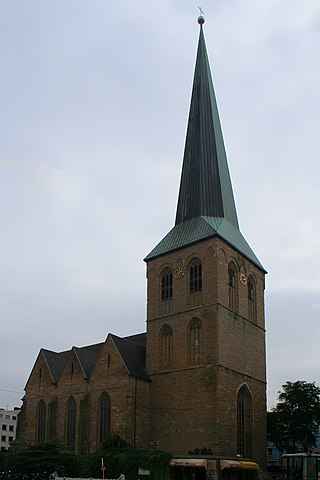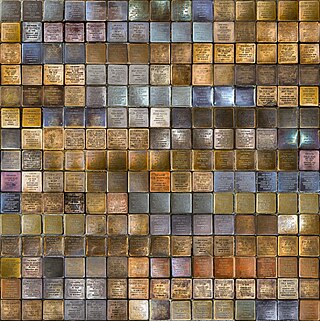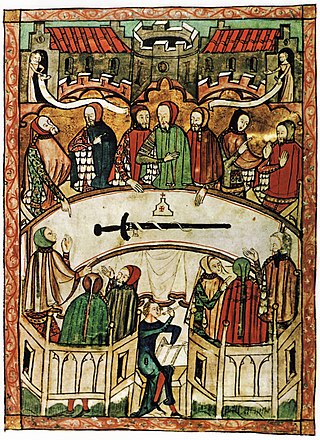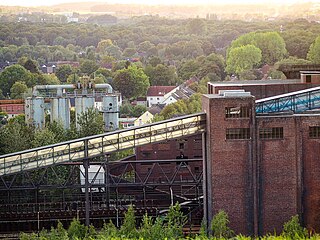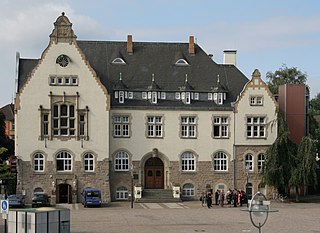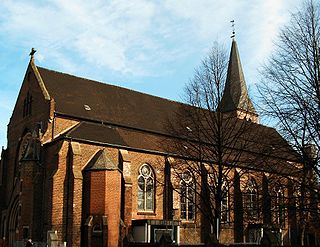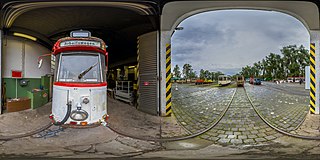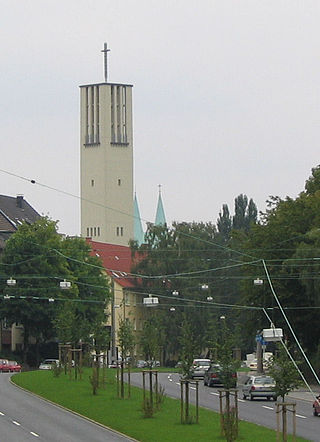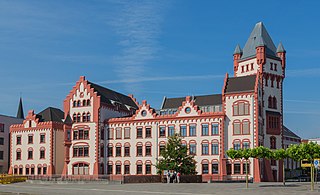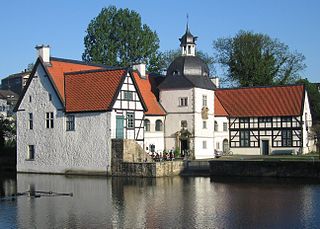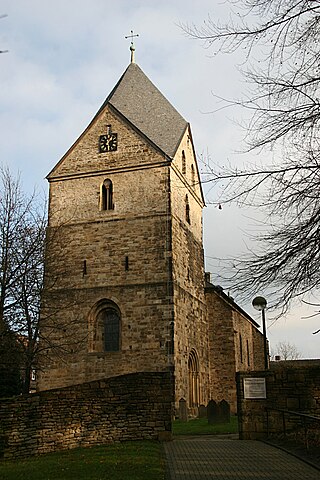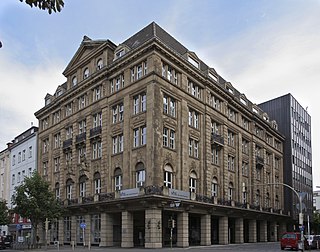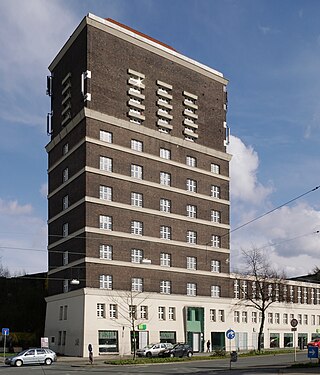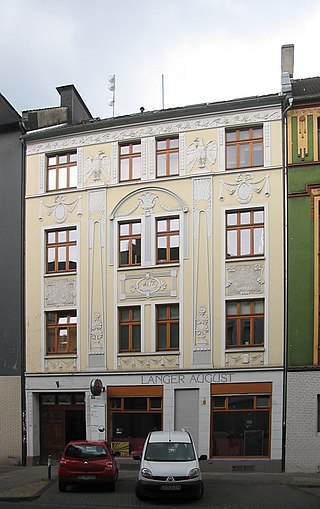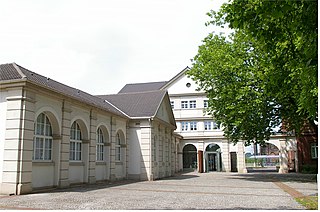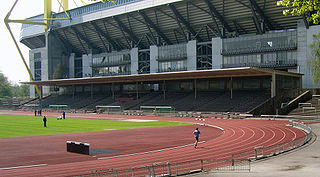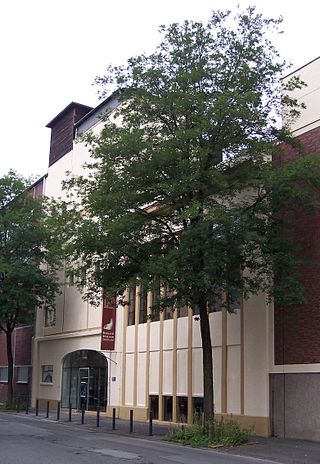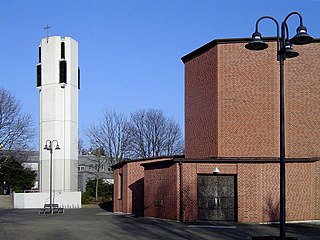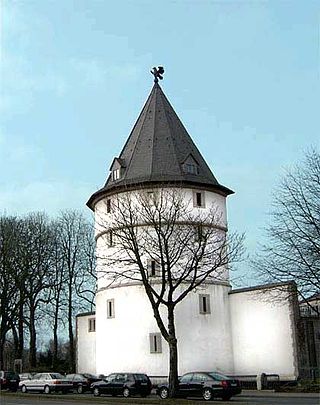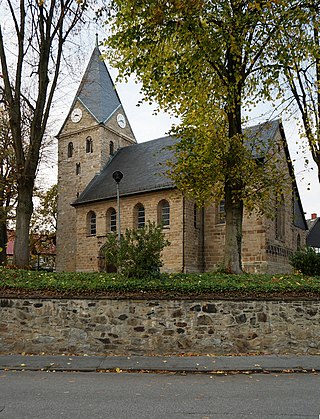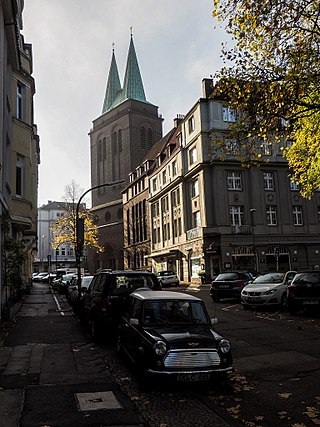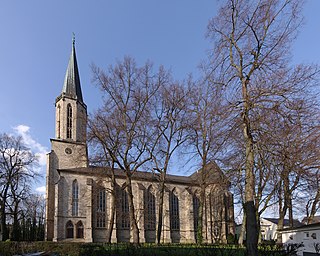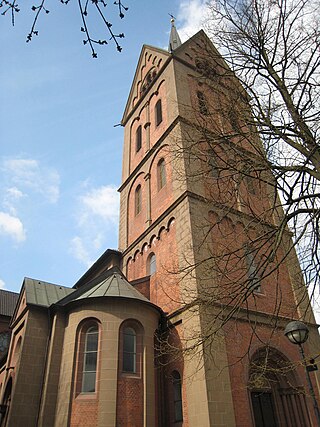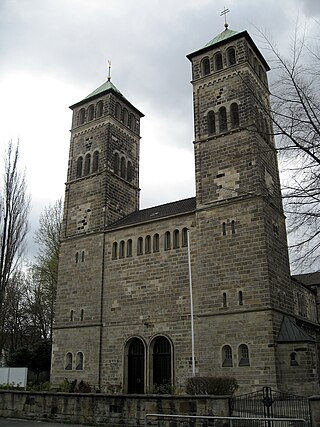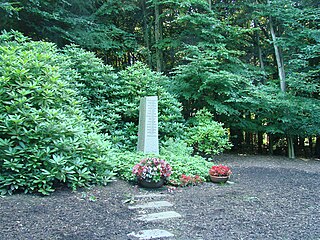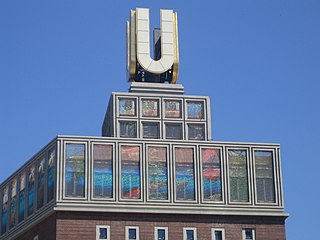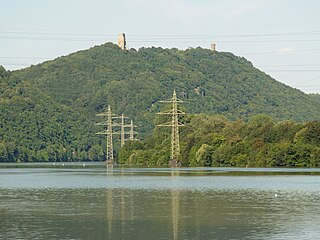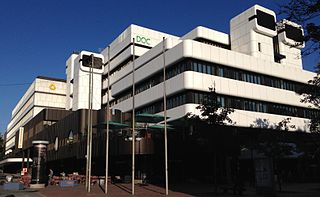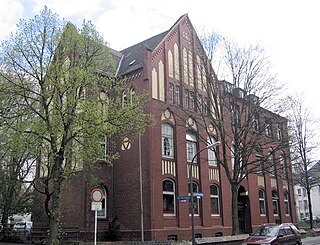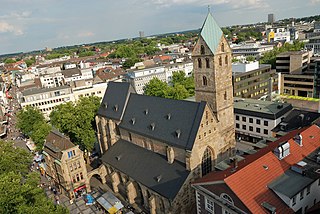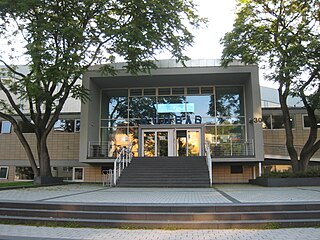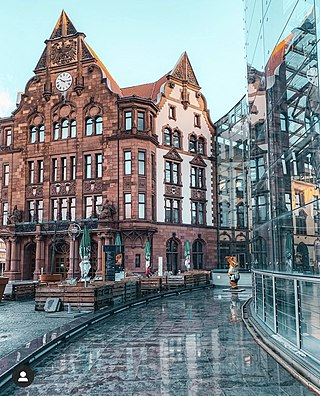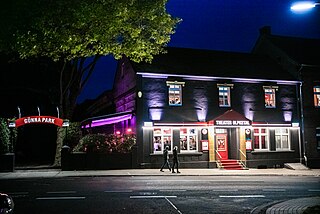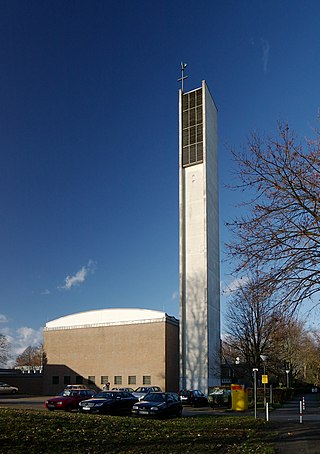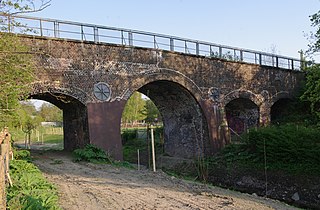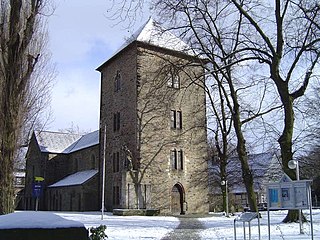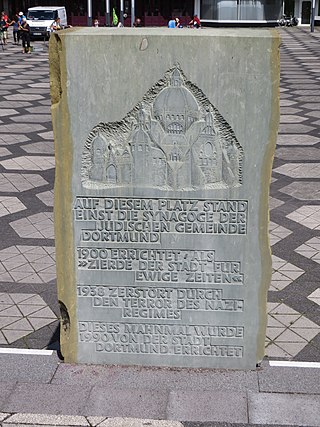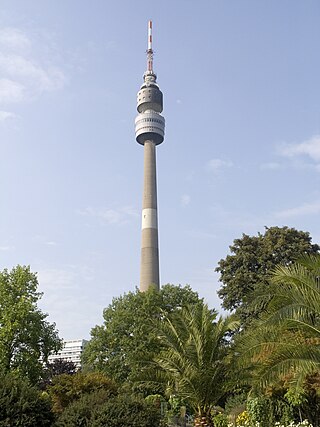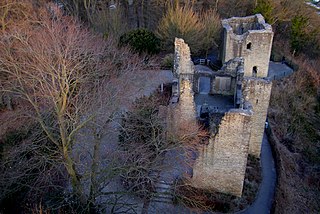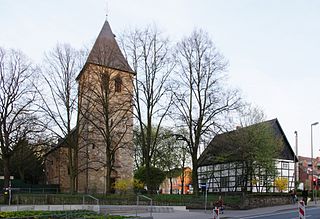59 Sights in Dortmund, Germany (with Map and Images)
Legend
Welcome to your journey through the most beautiful sights in Dortmund, Germany! Whether you want to discover the city's historical treasures or experience its modern highlights, you'll find everything your heart desires here. Be inspired by our selection and plan your unforgettable adventure in Dortmund. Dive into the diversity of this fascinating city and discover everything it has to offer.
Sightseeing Tours in DortmundActivities in Dortmund1. Petrikirche
St. Peter's Church in Dortmund, Westphalia, Germany, is an urban hall church in the High Gothic style. The central nave and side aisles are of the same height, coming close to the ideal type of this church form. The building is almost square in plan with a comparatively short chancel. The sacred building is an important example of the special shape of the hall churches in Westphalia.
2. SIGNAL IDUNA PARK
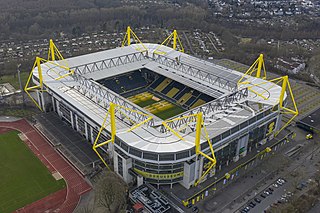
Westfalenstadion is a football stadium in Dortmund, North Rhine-Westphalia, Germany, which is the home stadium of Borussia Dortmund. Officially called Signal Iduna Park for sponsorship reasons and BVB Stadion Dortmund in UEFA competitions, the name derives from the former Prussian province of Westphalia.
3. Neuer Kaiserberg
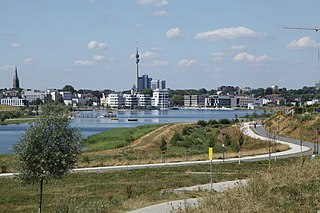
The Phoenix-See is an artificially created, approximately 24-hectare lake on the former Phoenix-Ost steelworks site in the Dortmund district of Hörde. It was and is being discussed as a showcase project for the structural change of the city of Dortmund and the Ruhr area. Lake Phoenix and the surrounding area form a residential and local recreation area with gastronomy and commercial development. Together with the 115-hectare Phoenix-West Technology Park to the west, about two kilometres to the west, and the 60-hectare Phoenix Park to the north, the lake has changed the image of Hörde, which was formerly dominated by heavy industry.
4. Alex Damm
The list of Stumbling Stones in Dortmund contains Stumbling Stones that were laid in Dortmund as part of the art project of the same name by Gunter Demnig. They are intended to commemorate victims of National Socialism who lived and worked in Dortmund.
5. Femlinde mit Freistuhl
The Vehmic courts, Vehmgericht, holy vehme, or simply Vehm, also spelt Feme, Vehmegericht, Fehmgericht, are names given to a tribunal system of Westphalia in Germany active during the Late Middle Ages, based on a fraternal organisation of lay judges called "free judges". The original seat of the courts was in Dortmund. Proceedings were sometimes secret, leading to the alternative titles of "secret courts", "silent courts", or "forbidden courts". After the execution of a death sentence, the corpse could be hanged on a tree to advertise the fact and deter others.
6. Konzerthaus
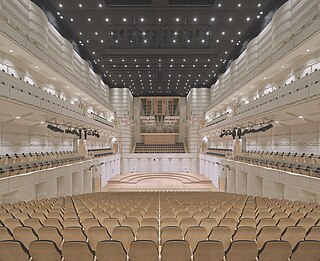
The Dortmund Concert Hall in Dortmund's city centre was opened in September 2002. It is located in the Brückstraße district at the intersection of Brückstraße and Ludwigstraße. The hall has 1550 seats, 900 of which can be used as a small hall, and is characterized by modern steel and glass architecture. The founding director and one of the main initiators of the "Konzerthaus project" was Ulrich Andreas Vogt. From 2005 to 2018, Benedikt Stampa was artistic director and managing director. For the 2018/19 season, he was succeeded by Raphael von Hoensbroech.
7. Westfalenhalle
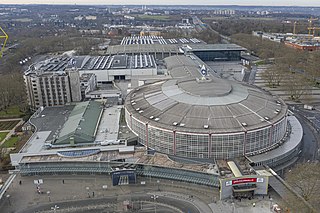
Westfalenhallen is a conference venue and exhibition center with an indoor arena (Westfalenhalle) in Dortmund, Germany. It is surrounded by the Eissportzentrum Westfalenhallen, Stadion Rote Erde, Westfalenstadion and Helmut-Körnig-Halle.
8. Kokerei Hansa Industriedenkmal
The Hansa coking plant is an architectural and industrial monument in Dortmund-Huckarde. It was built between 1927 and 1928 as a large-scale coking plant as a result of rationalisation measures and replaced the run-down small coking plants of the Hansa, Westhausen and Germania collieries in the northwest of Dortmund.
9. Bezirksverwaltungsstelle Aplerbeck
The Aplerbeck Amtshaus is located directly on the market square in Aplerbeck. It was built according to the plans of master builder Wilhelm Stricker from 1906 to 1907 for the Amt of Aplerbeck, replacing a predecessor building built in 1851. The person of the official architect Stricker is still commemorated today by a memorial plaque on the wall of the Amtshaus. A street in Aplerbeck, the Strickerstraße, was named after him. In the list of monuments in the district of Aplerbeck, the building is registered under the number A 0424.
10. St. Clemens
The Roman Catholic Church of St. Clemens is located in the Dortmund district of Hombruch. It is the parish church of the parish of St. Clemens of the same name in the pastoral area "Pastoral Association in the South of Dortmund". It bears the patronage of Clement of Rome.
11. Nahverkehrsmuseum Dortmund
Since 2001, the Dortmund Local Transport Museum has been located in the former locomotive repair workshop Betriebswerk Mooskamp (BwM) of Ruhrkohle Bahn- und Hafenbetriebe in the Dortmund district of Obernette. Since the closure of the locomotive workshop of the former Prosper-Haniel colliery in Bottrop, the BwM is the last former RAG depot still in operation. In this Dortmund project, labour and social policy employment measures are linked in cooperation with the Job Centre and the City of Dortmund with the creation of an educational-historical cultural institution, which can also be used for private or company celebrations.
12. Sankt-Nicolai-Kirche
The St. Nicolai Church, often referred to as the Nicolai Church, is a church built in 1929 in the Dortmund district of Innenstadt-West. A church of the same name existed until 1812 on Wißstraße and was one of the four main churches of medieval Dortmund.
13. Haus Bodelschwingh
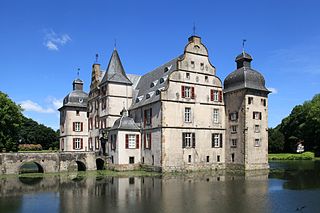
Haus Bodelschwingh is a moated castle in the Bodelschwingh district of Dortmund, Germany. It is one of 18 aristocratic residences in Dortmund and is considered the largest and most representative complex in the city area.
14. Liebfrauenkirche
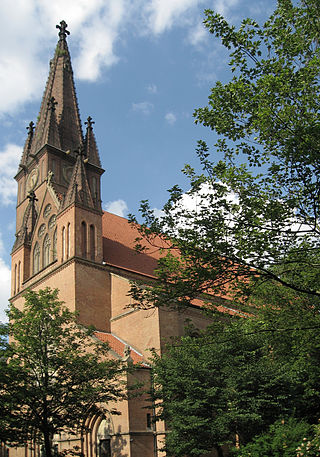
The Liebfrauenkirche is a Roman Catholic church in Dortmund, built between 1881 and 1883, Amalienstraße 21 a. It has been used as a columbarium since 2009, and until June 2009 it was a Roman Catholic parish church in the Dortmund district of Innenstadt-West. The church building is registered as an architectural monument in the list of monuments of the city of Dortmund.
15. Hörder Burg
Hörder Burg, also known as Hörde, in today's Dortmund district of Hörde, was built in the 12th century in the immediate vicinity of the Emscher as a moated castle. It is the ancestral seat of the noble Hörde family. Not far from the castle was an economically important grain mill at the confluence of the Emscher and Hörder Bach.
16. Wasserschloss Haus Rodenberg
The Rodenberg House is a moated castle in the Dortmund district of Aplerbeck. The castle fell into disrepair in the 19th and 20th centuries. All that remained of the former moated castle was the outer bailey with the economic section.
17. Sankt Peter Syburg
St. Peter is a Romanesque church in Syburg, now a suburb of Dortmund, Germany. It is the active Protestant parish church of Syburg, officially named "Ev. Kirche St. Peter zu Dortmund-Syburg". It serves as a concert venue for the bimonthly Syburger Sonntagsmusiken.
18. Sankt Reinoldi-Kirche
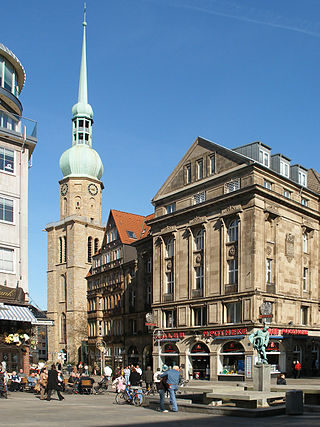
The Lutheran Protestant Church of St. Reinold is, according to its foundation date, the oldest extant church in Dortmund, Germany; it is dedicated to Reinold, also known as Renaud de Montauban, the patron of the city. The church was built as a palatine church in the Ottonian era. The present building is a late Romanesque church with a late gothic quire. St. Reinold's was built from 1250 to 1270, and is located in the centre of the city, directly at the crossing of the Hellweg and the historic road from Cologne to Bremen. St. Reinoldi's congregation is a member of the Evangelical Church of Westphalia, an umbrella comprising Lutheran, Reformed and united Protestant congregations.
19. Volkshochschule
The Löwenhof is a building in the city center of Dortmund. In the course of its history, it housed one of the largest concert cafés in West Germany, was the headquarters of the Heinrich August Schulte Eisenhandlung and is now the headquarters of the Dortmund Adult Education Centre.
20. Wasserturm Dortmund Südbahnhof
The water tower of Dortmund Südbahnhof is a water reservoir of the former Dortmund Süd locomotive depot. It was built between 1923 and 1927 by the Deutsche Reichsbahn and supplied steam locomotives with boiler feed water until the 1950s.
21. Langer August
Langer August is a self-governing socio-cultural center in Dortmund, founded in 1979, which is used by various groups. It is located in the listed building Braunschweiger Straße 22 in the Nordstadt and is a member of the State Working Group of Socio-Cultural Centres NW.
22. Opernhaus Dortmund
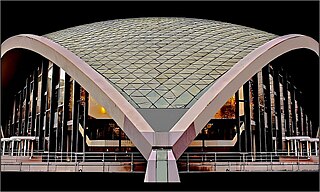
Opernhaus Dortmund is the opera house of Dortmund, Germany, operated by the Theater Dortmund organisation. A new opera house opened in 1966, replacing an earlier facility which opened in 1904 and was destroyed during World War II. It was built on the former site of the Old Synagogue, which was demolished by the Nazi local government in the 1930s.
23. Hoesch Museum
The Hoesch Museum is a museum in Dortmund, Germany, which reopened in 2005. Housed in the historic porter's house of the Westfalenhütte, the museum shows an overview of 160 years of company history, technical history and social history of steelwork, combined with Dortmund's city history.
24. Stadion Rote Erde
Stadion Rote Erde is a 25,000 capacity football and athletics stadium in Dortmund, North Rhine-Westphalia. It serves as the home stadium to Borussia Dortmund II and several athletic clubs. The stadium was built in between 1924 and 1926 at a cost of 1.8 million German Mark. The stadium was inaugurated in 1926, with a match between the City of Dortmund and FC Wacker München (1–11).
25. Brauerei-Museum
Founded in 1981, the Dortmund Brewery Museum was opened on 12 November of the following year on the grounds of the Dortmunder Kronen private brewery. The museum originated from the initiative of Heiner Brand, owner of the Dortmunder Kronen private brewery.
26. St.-Ewaldi-Kirche
St. Ewaldi Aplerbeck is a Roman Catholic parish church in the Dortmund district of Aplerbeck. The parish of St. Ewaldi Aplerbeck belongs to the parish of St. Ewaldi Dortmund in the Archdiocese of Paderborn. The church patrons are the Ewaldi brothers, who, according to tradition, are said to have died as martyrs here in Aplerbeck at the end of the 7th century.
27. St. Patrokli
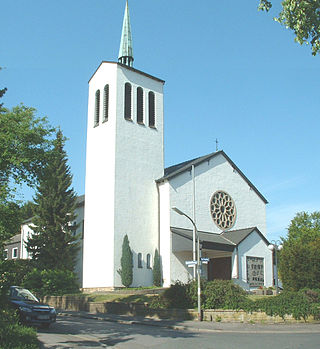
St. Patrokli is a Roman Catholic parish church in the Dortmund district of Kirchhörde in North Rhine-Westphalia, Germany. It is the parish church of the St. Patrokli parish, which, together with the parishes of St. Clemens Hombruch, St. Franziskus Xaverius Barop, Maria Königin Eichlinghofen and Heilige Familie Brünninghausen, forms the pastoral area Pastoralverbund Im Dortmunder Süd.
28. Herbert-Frommberger-Weg
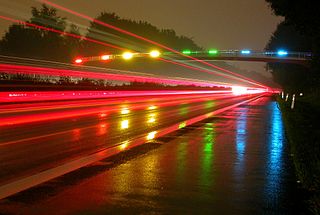
The Rainbow Bridge over the A40 connects the Dortmund district of Dorstfeld-Süd and the DASA – Working World Exhibition located there with the Technical University of Dortmund. The bridge can be used by pedestrians and cyclists.
29. Kindermuseum Adlerturm
The eagle tower is a reconstructed tower of the medieval city wall in Dortmund, which was built in 1992 over the original foundations of the former defensive tower. The 30 -meter -high tower was placed on pillars in order not to affect the foundation of the foundations of the original eagle tower from the 14th century and the adjacent city wall from the 13th century.
30. Sankt Johann Baptist
The Protestant St. Johann Baptist Church forms the centre of the Brechten village in the Dortmund district of Eving. Around 1250, the church was built as a three-aisled, two-bay hall on an almost square ground plan with a rectangular choir. The west tower is probably older. The sacristy was built around the year 1500. During the restoration of the interior in 1960/1962, extensive paintings from the time of the church's origin were uncovered and restored. The baptismal font dates from the 13th century, the pulpit and altar are from the 17th century.
Wikipedia: St.-Johann-Baptist-Kirche (Brechten) (DE), Website
31. Heilig-Kreuz-Kirche
The Holy Cross Church, often abbreviated Kreuzkirche, is a church building of the Roman Catholic Holy Cross parish in Dortmund. It is the namesake for the surrounding Kreuzviertel residential district.
32. Große Kirche
The Große Kirche Aplerbeck is a Protestant church in Aplerbeck, now part of Dortmund, Germany. It was built from 1867 to 1869 in Gothic Revival style, designed by Christian Heyden. A listed monument, it is used by the parish St. Georg, serving mostly as a concert church.
33. Tremoniapark
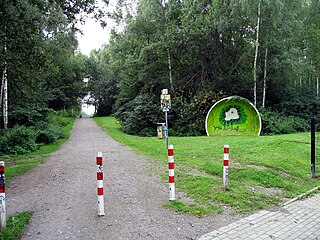
The Tremoniapark in Dortmund, also known as the Tremoniawiese, is a green and local recreation area on an old industrial site and a typical example of structural change in the city. In the park there are half-shelled lace floors as an art installation, which were components of pressure vessels.
34. St.Barbara
The Roman Catholic parish church of St. Barbara is located in the Dortmund district of Dorstfeld in North Rhine-Westphalia. The church, which is under the patronage of Barbara of Nicomedia, was built between 1895 and 1896 by master builder Lambert von Fisenne.
35. Pauluskirche
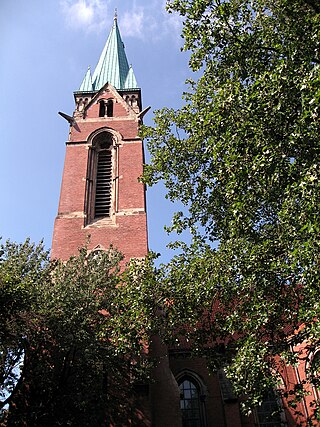
St. Paul's Church is located in Dortmund's Nordstadt, on the corner of Schützenstraße and Kirchenstraße. It was built between 1892 and 1894 according to a design by the Berlin architect Karl Döfflein. The building was badly damaged in the Second World War, repaired after 1945 and restored in 1994. It is registered as an architectural monument in the list of monuments of the city of Dortmund.
36. Dreifaltigkeitskirche
The Roman Catholic Trinity Church in Dortmund's Nordstadt is located near Borsigplatz at Flurstraße 10. The parish is one of the Roman Catholic parishes founded in the context of industrialization on the periphery of Dortmund's city center. The Roman Catholic workers who had immigrated for jobs in the coal and steel industry were to find a religious home in Protestant Dortmund in these communities.
37. Gedenkstein für Opfer des Hubschrauberabsturzes
The air accident at the YOU youth fair occurred on 6 June 1996 during the European youth fair YOU in Dortmund. A Bell UH-1D of the Flight Readiness of the Federal Ministry of Defense crashed into a wooded area during a show flight. Of the 14 occupants, 13 were killed. The accident is considered the most serious helicopter accident in the history of the Bundeswehr to date.
Wikipedia: Flugunfall bei der Jugendmesse YOU 1996 in Dortmund (DE)
38. Dortmunder U – Zentrum für Kunst und Kreativität
The U-Tower or Dortmunder U is a former brewery building in the city of Dortmund, Germany. Since 2010 it has served as a centre for the arts and creativity, housing among other facilities the Museum Ostwall.
39. Syberg
The Syberg is a hill in the Ruhr in the southern part of Dortmund, 240 m above sea level (NN), which is part of the Ardey Hills. The Syberg is home to the Sigiburg, the Vincke Tower, a monument to Emperor William I and other points of interest.
40. Kreuzkirche
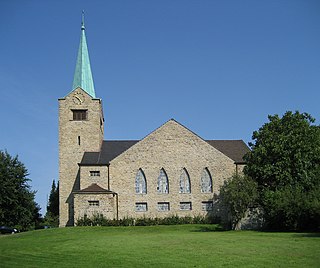
The Kreuzkirche is a Protestant church in the Dortmund district of Berghofen, Fasanenweg 18. It is the place of worship of the Protestant parish of Berghofen, which belongs to the Evangelical Church of Westphalia.
41. DOC - Dortmunder Centrum für Medizin und Gesundheit
The Deilmann Building in Dortmund is an office and commercial building built for WestLB between 1975 and 1978 near the main railway station. As with similar buildings at the headquarters of WestLB AG in Düsseldorf, Cologne and Münster, the design was created by architect Harald Deilmann.
42. Westfälisches Schulmuseum
The Westphalian School Museum in the Dortmund district of Marten was founded in 1910 as an institution for teacher training and as a display collection of teaching materials. Today, the museum houses one of the most important school history collections in Germany.
43. Evangelische Kirche Eichlinghofen
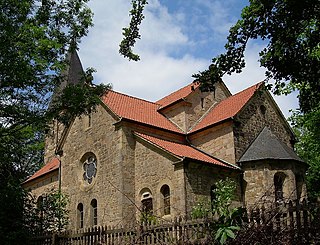
St. Margaret's Church in the Dortmund district of Eichlinghofen is a Romanesque hall church from the 12th century dedicated to Margaret of Antioch. It is registered as an architectural monument in the list of monuments of the city of Dortmund. According to legend, until 1846 there was a stone at the entrance portal of the church, which noted the year 1070 as the year of construction of the church.
Wikipedia: St.-Margareta-Kirche (Eichlinghofen) (DE), Website
44. Sankt Marien
Marienkirche is a church in Dortmund, North Rhine-Westphalia state, Germany, located in the inner city. Since the Reformation, it has been a Lutheran parish church of St. Marien. The church was destroyed in World War II, but rebuilt. It also serves as a concert venue for sacred music.
45. AWO Schultenhof
The AWO-Schultenhof in Dortmund-Renninghausen in the district of Hombruch is a residential and working project of the Workers' Welfare Association (AWO) for disabled people in the field of organic farming with associated open-air gastronomy. The focus is on the integration of disabled people into working life in organic agriculture and horticulture.
46. Südbad
The Südbad is an indoor swimming pool in Dortmund's city centre. The building, which was renovated in 2007, is registered as an architectural monument in the list of monuments of the city of Dortmund.
47. Standesamt Dortmund
Altes Stadthaus in Dortmund, North Rhine-Westphalia, Germany, is an office block which was built in 1899, and was designed by "master builder" Friedrich Kullrich. It was built in the Renaissance Revival architecture (Neo-Renaissance) style. After the office block was severely damaged in World War II, it was rebuilt in a simplified form.
48. Theater Olpketal
The Theater Olpketal is a small family-run theater on Olpketalstraße in the southern Dortmund district of Lücklemberg, where the Dortmund cabaret artist Bruno Knust usually performs several times a week with various programs. His shows are characterized by the special humor of the Ruhr area, his repartee and entertainer qualities. In addition, the Olpketal Theatre also regularly offers guest performances by selected artists on its programme, such as Robert Kreis, Lioba Albus, Karl Dall, Wolfgang Trepper, Jürgen Becker or Torsten Sträter.
49. Propsteikirche St. Johannes Baptist
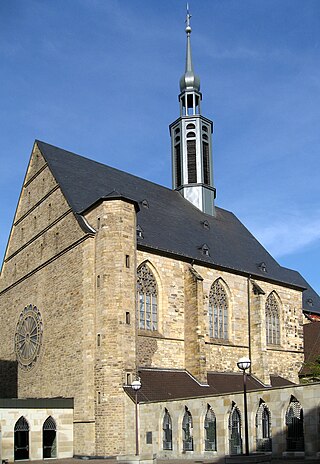
Propsteikirche is the common name of a church in Dortmund, North Rhine-Westphalia, Germany, the only Catholic church in the city centre. The full name is Propsteikirche St. Johannes Baptist Dortmund. It was built from 1331 as the abbey church of a Dominican monastery. Consecrated in 1458, it features a late-Gothic high altar by Derick Baegert which shows the oldest depiction of Dortmund.
50. St. Martin
St. Martin's Church is a Roman Catholic church building in the Dortmund district of Körne, Gabelsbergerstraße 32. The patron saint of the church is Martin of Tours, one of the most famous saints of the Catholic Church. The two-storey hall church with a free-standing bell tower was built in 1959/1960.
51. Paul-Gerhardt-Kirche
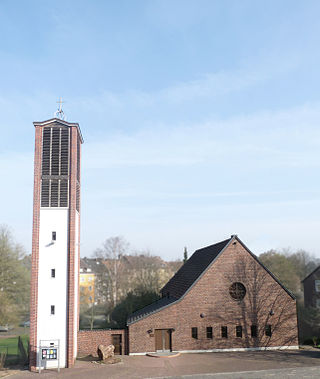
The Paul-Gerhardt-Kirche is a Protestant church in the Dortmund district of Innenstadt-Ost. It was built between 1948 and 1949 as an emergency church according to a design by Otto Bartning and has been a listed building since 2011. The patron saint is the hymn writer Paul Gerhardt. The Evangelical Paul Gerhardt parish, which owns the church, is part of the Evangelical Church of Westphalia.
52. Feldchenbahnbrücke
The Feldchenbahnbrücke not far from the Dortmund district of Aplerbeck is a listed brick arch bridge. It is the last surviving relic of the connecting line built between 1867 and 1870 from the Vereinigte Schürbank & Charlottenburg colliery to the Dortmund–Soest railway. The approximately 1600-metre-long, single-track railway line, which merged into the main line about 100 metres west of Aplerbeck station until its closure, formed almost an S-shape. Coming from the colliery, the Feldchenbahn bridge bridges the Emscher, which is still very young at this point, after a good 700 metres.
53. Georgskirche
St. Georg is a church and Protestant parish in Aplerbeck, now part of Dortmund, North Rhine-Westphalia, Germany. It is a Romanesque cross basilica (Kreuzbasilika) from the 12th century. The only building in Dortmund of its kind, it is a listed monument.
54. Mahnmal für die Alte Synagoge
The Old Synagogue was a former Jewish congregation and synagogue, located in Dortmund, in the state of North Rhine-Westphalia, Germany. Completed in 1900, the synagogue was abandoned in 1933 and demolished in 1938. Prior to its abandonment, the synagogue was the largest synagogue and cultural center of the Jewish community in Dortmund.
55. Westfalenpark
The Westfalenpark is a large public park in Dortmund, Germany. With an area of 70 ha, the park is one of the largest inner-city parks in Europe and is a popular destination for excursions and recreation in North Rhine-Westphalia. The park is situated between the Westfalenstadion, Westfalenhallen, Bundesautobahn 40 and includes the Florianturm. The Emscher valley forms the southern border of the park.
56. Kaiser-Wilhelm-Denkmal
The Sigiburg was a Saxon hillfort in Western Germany, overlooking the River Ruhr near its confluence with the River Lenne. The ruins of the later Hohensyburg castle now stand on the site, which is in Syburg, a neighbourhood in the Hörde district of Dortmund. Archaeological evidence suggests the site was occupied in the Neolithic era. The hillfort was raised ca. 700 by Westphalian Saxons. During the Saxon Wars, it was taken by the Franks under Charlemagne in 772, retaken by the Saxons in 774, and taken again and refortified by Charlemagne in 775.
57. St. Johannes der Täufer
The listed Protestant Church of St. John the Baptist is located in Brackel, a district of the Brackel district of the district-free city of Dortmund in North Rhine-Westphalia. It belongs to the Dortmund church district of the Evangelical Church of Westphalia.
58. Haus Husen
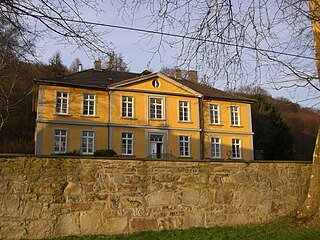
Haus Husen is a manor house on the right bank of the Ruhr in the district of Hörde, Dortmund. It was built in 1830 in the style of classicism. It is now owned by the Evangelical Church of Westphalia.
59. Sankt Urbanus
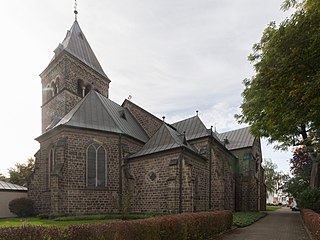
The Roman Catholic, listed parish church of St. Urbanus is located in Huckarde, a district of the Huckarde district of Dortmund, an independent city in North Rhine-Westphalia. The church belongs to the pastoral association Am Revierpark in the Dortmund deanery of the Archdiocese of Paderborn.
Share
How likely are you to recommend us?
Disclaimer Please be aware of your surroundings and do not enter private property. We are not liable for any damages that occur during the tours.
